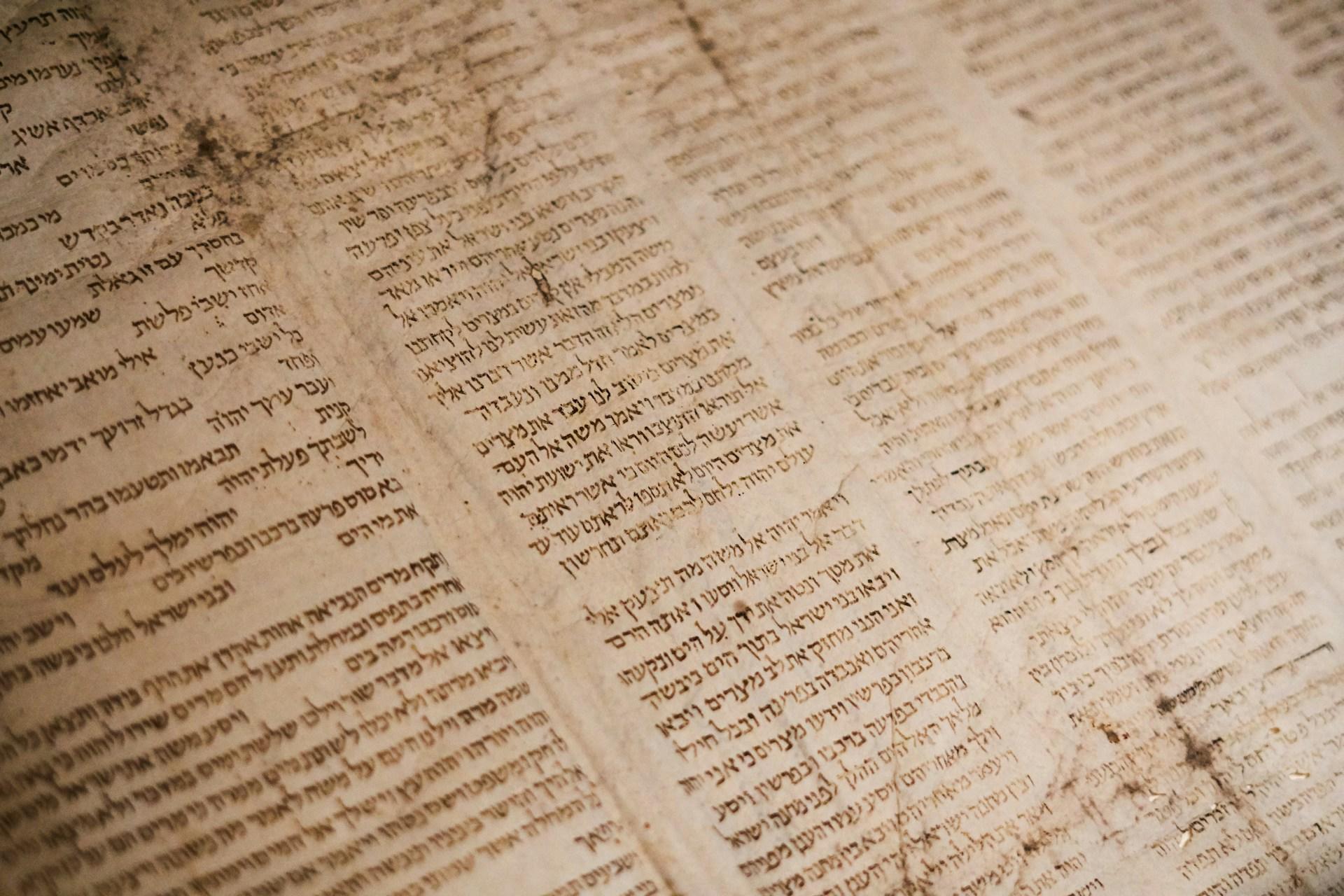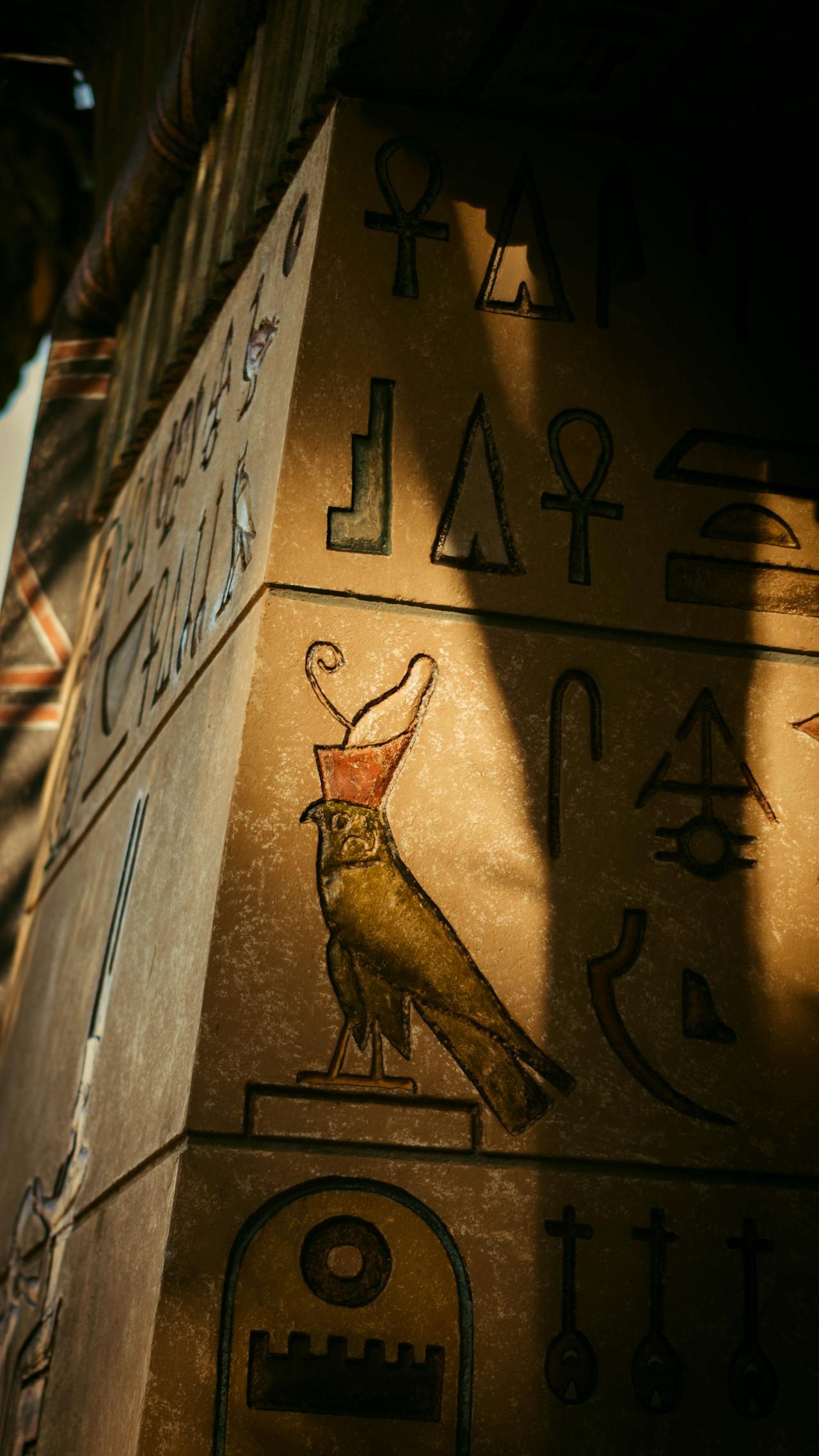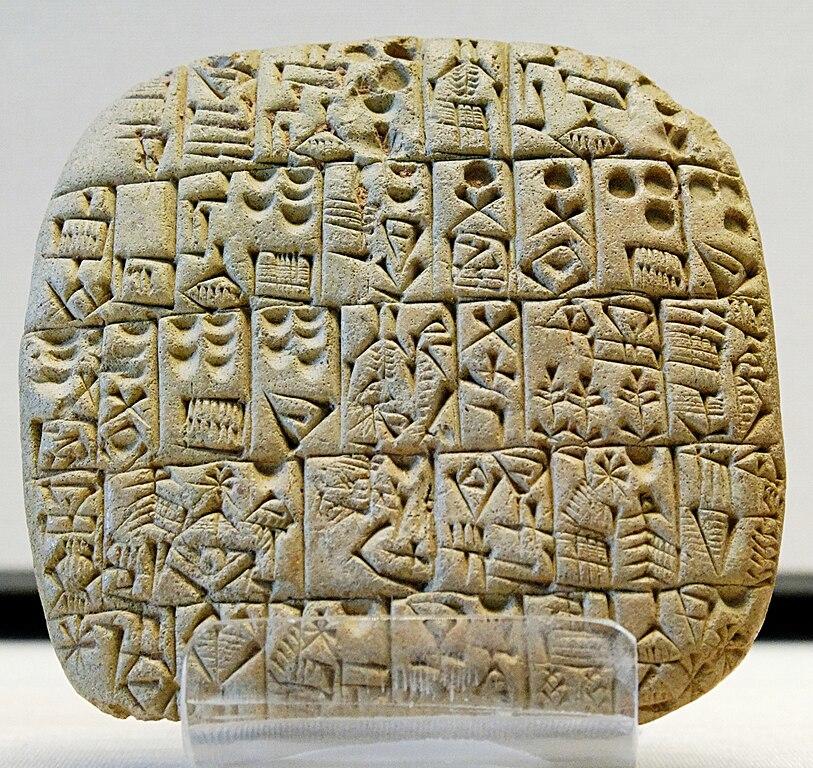The development of language is surely one of the most important things to have ever happened in the history of the human race. While it’s true that before language, Homo sapiens (and their ancestors, like Homo naledi) had some ways of communicating, they were not nearly as comprehensive or articulate as the ways we developed later on.
Imagine trying to convey the meaning of this sentence without using any words, perhaps only saying “aaaa” in different ways. Not very effective for explaining details!
Scientists estimate there are around 7,100 “official” languages in the world today (languages with a substantial amount of speakers). However, in 2011, the Indian government acknowledged there were 19,569 self-reported “mother-tongue languages.” Imagine how many languages there truly are in the world if you count the ones that only have 1 or 2 speakers!
What do we know about ancient languages? What are the oldest languages still used around the world today? Find out all this and more!


The World’s Oldest Languages
There are hundreds of old languages we know of, but only a handful get talked about because they are more well-known.
World's Oldest Living Language - Tamil
Tamil, spoken by 78 million people and an official language in Sri Lanka and Singapore, is the oldest language in the world, having survived from ancient times to the modern era. As part of the Dravidian language family, which includes several native southern and eastern Indian languages, Tamil is the most widely used language in the state of Tamil Nadu and is also one of India's official languages. Inscriptions dating back to the 3rd century B.C. have been discovered in Tamil.
World's Oldest Language - Sanskrit
Unlike Tamil, which is still widely spoken, Sanskrit is the oldest language in the world but fell out of common usage around 600 B.C. It is now a liturgical language - the holy languages found in the scriptures of Hinduism, Buddhism and Jainism. The first written record of Sanskrit can be found in Rigveda, a collection of Vedic Sanskrit hymns, which was written in somewhere around 2nd millennium B.C. According to studies, Sanskrit forms the base for many European languages and is still one of India's official languages.
6 Oldest Languages Still Used Today
One of the most interesting questions out there is what is the oldest language that is still being used?
Because the dates are not exact, it’s hard to determine the definitive answer, but we have a handful of contenders.
Tamil
The exact date of origin of Tamil is debated. Some say the first record of the language is in the Tolkāppiyam (தொல்காப்பியம்), a religious text with a questionable date of creation. Some say the text was written as early as 5,320 BCE, while more conservative estimates put it between the 3rd and 8th centuries BCE.
Either way, Tamil’s advantage in the “competition” between Sanskrit and Tamil is that Tamil is an active language that millions of people currently learn as their first language and use in their everyday activities, as well as in schooling and business.
There are about 80 million Tamil speakers across the world.

Sanskrit
First appearing in the Rigveda in about 1900 to 1200 BCE, Sanskrit is an interesting language to have on this list because it’s not typically an everyday language, but millions of people still use it often.
Fewer than 25,000 people reported it as their mother tongue in the 2011 Indian census, however, it’s not a first language for any known people currently and it’s not generally known as a conversational or business language.
Sanskrit is a mother language of many modern languages, and it’s the traditional language in a lot of historical media and social/religious practices in India, there are still many people who can be considered fluent in this ancient language.
Over 2 million people in India report knowing Sanskrit, and across the globe, millions of others learn the language because of its historical significance (especially with the rise in popularity of yoga).
Deven Patel, who is a professor of South Asia studies at the University of Pennsylvania in the US, calls Sanskrit a continuous language tradition, rather than a modern language on the same level as Hindi, English, Dutch, Korean, etc.
Greek
It’s likely that early Greek was spoken since around 3,000 BCE, and the earliest writing sample we have is from about 1450 to 1350 BCE. Greek being a living language today is especially interesting because of all the fascinating information we know from Ancient Greece, including mythology, unique social and cultural practices, philosophy, science, maths and more!
Today, about 13.5 million people across the globe speak Greek, and there are many Greek words present in other languages, like English.
Chinese
While modern Chinese characters don’t appear until around 618-690 CE in the Tang Dynasty, the oldest form of Chinese can be seen as early as 1250 BCE.
One thing that’s important to note about Chinese is that it’s a generalized term for many languages in China. It’s like saying “Indian language”; in reality, there are many languages making up the country. In China, the languages just happen to be more similar than coexisting languages in other countries.
The two major languages are Mandarin and Cantonese, and there are about 1.2 billion speakers across the world combined.

Arabic
The earliest form of Arabic can be seen as far back as 1200 BCE, but more modern iterations appear around the 8th century BCE, and the form that most resembles modern Arabic is likely from the 6th century CE. By the 8th century, it was a prerequisite for scholars to know Classical Arabic when seeking education in the Islamic world.
An interesting phenomenon happening with modern Arabic is that it seems to be developing into many different dialects, causing some confusion about the status of the language at large, as certain dialects are so dissimilar that they cannot communicate well despite both deriving from Arabic.
Regardless, there are about 380 million native Arabic speakers (of all dialects) in the world today.
Hebrew
The first examples of written Hebrew can be found from around 1000 BCE. It’s believed use of the language peaked around the 6th century BCE, but by 400 CE, its use all but vanished due to the Roman oppression of Jews.
The language survived because it was used in many printed books (like the Tanakh) and in the 19th century, there was a large-scale revival. Modern Hebrew is very different from ancient Hebrew, but that’s what languages do over time. It became a rather widely spoken language, especially amongst Jews across the world. Today, there are about 5 million fluent Hebrew speakers.

The First Language in the World: Two Theories
Historians and scientists have worked on finding out as much information as possible to come up with hypotheses. Using clues and understanding the way of life of people in the past helps give scientists an idea of what may have been the first language(s).
Theory One: Proto-Sapiens Language
It’s theorized that the first spoken language was what scientists call “proto-sapiens language.”
This is anticlimactic because it doesn’t tell us anything about how it relates to the languages we know today. And, it’s impossible to prove.
It’s simply the term used to describe “whatever language came first,” and while it likely originated in Africa, there’s no way to determine where, by whom, or when it was developed or what it sounded like.
Theory Two: African Language Families
A previous linguistic theory that scientists used to use was the theory of the Khoisan language family from Southern Africa which originated about 50,000 to 60,000 years ago.
They came up with this language family because today many different languages and dialects share notable similar features, like different types of tongue clicks. These are the languages that, when written, use “!” and “ǂ” to indicate different tongue-click sounds.
Newer research shows that this language family grouping is not accurate and that in reality many unrelated languages use click sounds. Today, the term “Khoisan” simply means “an African language with click sounds.” Some variants of these languages still exist today, but many are in danger of dying out.
Without getting too technical, the science today points to two main language families in Africa: Afroasiatic, and Niger-Congo.
Scientists estimate that the Proto-Afroasiatic language probably developed as a spoken language between 18,000 BCE and 8,000 BCE, making it the oldest known language family in the world. It is considered the parent language of Egyptian.

It was written about in Sumeria and Egypt once writing was invented, so we know and was a well-established language before Mesopotamians started using clay tablets.
This theory is the best one we have right now for determining the world’s oldest spoken language.
The Oldest Written Language in the World - Sumerians
The Sumerians likely invented writing in ancient Mesopotamia c. 3500 BCE.
We call this writing system cuneiform, and it was “written” by pressing a stick with a wedge-shaped end into a tablet of soft clay, which would then dry out to hold the message. The ancient Mesopotamians and surrounding civilizations likely used this method of writing for long-distance communications regarding trade, at least at first.
In 1962, a piece of pottery from Yangshao was found with ancient Chinese characters inscribed on it. It’s estimated that the pottery is from 5000-4000 BCE, according to the Guinness Book of World Records. But, it’s hard to find verification of this discovery!
Other Notable Ancient Written Languages
From cuneiform, other languages emerged. Since cuneiform was mostly for business transactions, writing anything else, like a personal letter was difficult.
So, other languages with the capacity for writing more everyday content needed to be developed.
Mesopotamian Cuneiform laid the foundation for several other languages to be directly created, including:
- Sumerian
- Akkadian
- Babylonian
- Elamite
- Hatti
- Hittite
- Assyrian
- Hurrian

Meanwhile, Egyptians were developing hieroglyphics to write about various subjects, and the Sumerians were developing their language. Ancient Greeks were also developing their linguistic skills at this time, and Sanskrit also appeared.
The first evidence of Ancient Chinese writing is from about about 1,500 years later, c.1250 BCE.
Phoenician, Aramaic, and Hebrew appeared around 1000 BCE. Old Arabic can be seen around the 8th century BCE, and Latin was developed around the 7th century BCE.
Old Persian appears around 500 BCE, and Old Tamil is evident around 300 BCE (although some evidence suggests it may be older, perhaps even older than Sanskrit).
Just before the turn from BCE to CE, Old Korean appeared.
In the Common Era, Proto-Norse languages in Europe begin to show up around 200 CE, Old Kannada around 450, Telugu around the mid-6th century, Old Japanese and Hindi around the mid-7th century, and Old English and Kashmiri at the beginning of the 8th century.
Malayalam and Old French both appear around the late 9th century.
Of course, all the other languages that we know of were also developed among these listed languages and after, but languages developed in the 10th century are hardly that historic when we are talking about languages that are thousands of years older!
Other Notable Ancient Living Languages
Some other current living languages with ancient roots include:
- Iroquoian (perhaps as early as 2,000 BCE)
- Aramaic (1100 BCE)
- Korean (57 BCE)
- Icelandic (200-800 CE)
- Farsi (Modern Persian began around 800 CE)
- Basque (1st century CE)
- Irish Gaelic (4th century CE)
Why not Egyptian? Modern Egyptians speak Egyptian Arabic, not a language based on ancient Egyptian. Therefore, Egyptian is not an ancient language that people still speak today.
The Oldest Languages Were Never Written
It’s important to remember that speaking and writing are two entirely different concepts that developed at different times. Sadly, it means that we will never know what the oldest languages were, because there is no written version of them. After all, writing hadn’t been invented yet!
That’s why scientists have had to speculate about what kind of sounds early humans were able to make based on fossilized skulls, but that’s not the most complete way to know how someone could have sounded.
Scientists believe that humanoids learned how to “speak” around 50,000 years ago, which is a long time, but when you remember that humans have been around for perhaps 5-7 million years, it’s only a very recent advancement.
Writing was likely only invented around 6,000 years ago. So, imagine there were about 44,000 years of spoken languages that were born, evolved, and died out before we even started having hard evidence of language at all!
On top of that, we don’t have all the written records of all time from everywhere in the world, so there are probably a lot of languages we are unaware of.
Language is an incredible thing that people all over the world use to communicate. It’s a living aspect of all of our lives because you can see language change all the time! The languages a person speaks also greatly influence the way they think and feel about the world.
References
- Study International https://studyinternational.com/news/oldest-languages-in-the-world/
- World History Encyclopedia https://www.worldhistory.org/cuneiform/
- Scientific American https://www.scientificamerican.com/article/whats-the-worlds-oldest-language1/
- Times of India https://timesofindia.indiatimes.com/readersblog/whatsup-university/oldest-language-of-the-world-19460/















